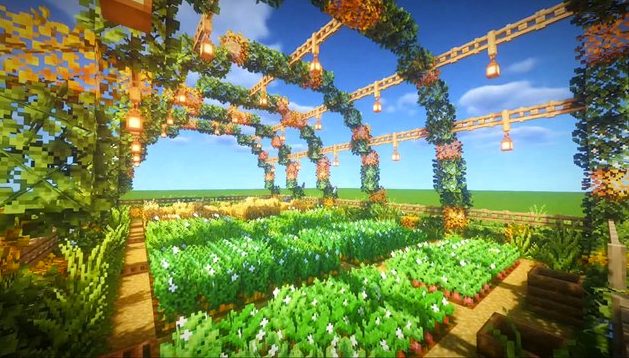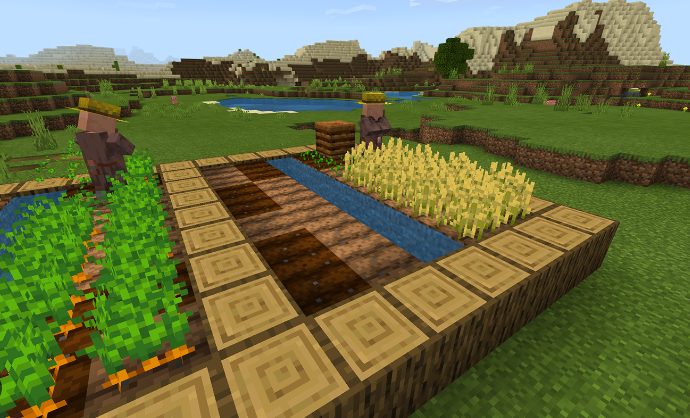
In the boundless expanse of Minecraft Server Hosting, players encounter a myriad of opportunities to engage their imaginations and refine their skills. While combat and architectural feats often take center stage, one of the most underrated yet profoundly gratifying pursuits is the art of farming.

Many players gravitate toward battles or constructing elaborate edifices, overlooking the essential practice of cultivating crops. However, in Survival mode, farming is indispensable—it ensures sustenance, staves off starvation, and provides a renewable source of nourishment. Your farm becomes a lifeline, offering the means to restore health and thrive.
Although Minecraft's farming mechanics are less intricate than their real-world counterpart, they still offer layers of complexity. This guide will illuminate the nuances, enabling you to maximize efficiency and reap the rewards of your virtual harvest.
TIP
The Right Kind of Soil in Minecraft Farms
Every seasoned farmer knows that not all soil is created equal. Some terrains are inhospitable—either too rocky or overly saturated—to sustain growth. Similarly, Minecraft demands the preparation of the right foundation for successful cultivation.
Distinguishing soil from dirt is straightforward: soil appears slightly lower and darker. You can transform dirt or grass blocks into farmland by wielding a hoe. Thus, any grassy expanse in the game can be converted into fertile ground. Yet, soil alone is insufficient for growth.

Irrigation is paramount. Saturated soil appears darker, signaling its readiness for planting. By hydrating one block of soil, you can irrigate up to four adjacent blocks. Maintaining this moisture is essential; neglected soil reverts to dirt, particularly if left unplanted or trampled by mobs or players.
Crops such as wheat, while capable of growing without water, flourish more rapidly when hydrated. Conversely, plants like saplings, mushrooms, and sugarcane thrive in regular dirt without any modification.
Do Minecraft Crops Need Sunlight?
Beyond soil and water, plants require light to grow. Sunlight serves as the optimal source, so planting outdoors is ideal. However, if you prefer cultivating indoors or underground for protection against mobs, artificial lighting becomes necessary.
A well-lit farm can flourish under torches, jack-o’-lanterns, or redstone lamps. Torches emit nearly the same luminosity as sunlight (14 units versus the sun's 15), making them a practical substitute. Be mindful, though, as dimmer light sources may prolong the growth process.
TIP
How to Make Crops Grow Faster in Minecraft?
Patience may be a virtue, but in Minecraft, you can hasten growth using fertilizer. Bone meal, crafted from skeleton remains, acts as a potent growth enhancer. By applying bone meal directly to a crop, you may witness an immediate spurt of growth.
This method is particularly effective for crops like wheat, which typically require only two applications of bone meal to reach maturity.

Finding Best Minecraft Seeds
Seeds are the cornerstone of any farm. Harvest them by breaking grass blocks or looting treasure chests, which may yield melon or pumpkin seeds. Certain crops, such as carrots and potatoes, can be acquired from zombies or discovered in villages.
Plants like sugarcane and cacti naturally generate in the wild, often near water or in deserts, respectively. Once you’ve collected seeds, prepare your soil, irrigate it, and plant them. Crops will grow gradually, transforming from tiny sprouts into fully matured plants.
Setting up Your Minecraft Farm
A well-organized farm minimizes labor and maximizes efficiency. For irrigation, a single water block can hydrate a 9×9 grid of soil, making it practical to place water at the center of your farmland. Alternatively, a linear water strip can support rectangular plots.
Ensure adequate lighting by positioning torches or other light sources along the perimeter or evenly across the farm. For larger or irregularly shaped plots, distribute light to cover every corner, ensuring consistent crop growth.
Growth rates vary between crops, with most maturing within 10 to 30 minutes under optimal conditions. Fertilizers like bone meal can significantly reduce this time, but a well-constructed farm, complemented by patience, will yield bountiful harvests.
Mastering the nuances of Minecraft farming transforms a mundane activity into a rewarding endeavor, equipping you with the resources to not only survive but thrive in your virtual domain.

 en
en
 CHAT WITH GODLIKE TEAM
CHAT WITH GODLIKE TEAM 




